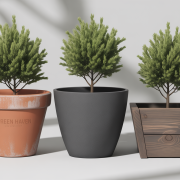Winter is a time of year that can bring beautiful snow and chilly temperatures but can also seriously damage homes. From frozen pipes to ice dams on roofs, winter weather can wreak havoc on houses and their foundations.
Many homeowners only realize the full extent of the potential damage that winter weather can cause once it’s too late. Understanding how winter affects your home’s foundation, drainage systems, and other areas can help you prepare for the coldest months, so you don’t face costly repairs down the line.
1. Frost Heave: When water seeps into the soil around your foundation, it can freeze and expand, creating a force that pushes against the walls of your home. This is known as frost heave, and it can cause significant damage to foundation walls and columns over time. Homeowners should ensure their gutters are clear of leaves or obstructions so that melting snow and ice can flow away from their foundations.
2. Frozen Gutters: If gutters become blocked with debris such as leaves or branches, rainwater will be unable to flow away properly, which can cause water to back up onto your roof, leading to leaks and potential structural damage to the building fabric of your home. To prevent this winter damage, regularly check and clear your gutters from obstructions.
3. Ice Dams: An ice dam is a ridge of ice that forms at the roof’s edge and prevents melting snow from draining off. The resulting water can eventually back up onto the roof, leading to expensive damage to shingles and other components.
Homeowners should ensure their roofs are properly insulated to prevent heat loss which can exacerbate this problem. They should also consider installing heated cables or strips along the eaves and rakes to free them from ice buildup during winter.
4. Poor Drainage: Inadequate drainage around your home’s foundation can cause waterlogged soil, which can push against walls, causing cracking or even collapse. To prevent this, ensure your yard has proper drainage and that the soil around your home’s foundation is graded away from the house at a slope of six inches every 10 feet.
5. Leaking Roof: Snow and ice buildup on your roof can cause water to seep under shingles, leading to costly repairs. Homeowners should regularly inspect their roofs during winter months for signs of leaks or damage and take steps to repair any issues promptly.
Additionally, if you have an older roof, consider replacing it with one designed for colder climates to prevent further winter damage.
Read Article: Home Remodeling: Is Remodeling Your Basement A Worthy Investment?
6. Cracked Pipes: Cold temperatures can cause pipes within your home to freeze and crack, leading to water damage and even flooding. Homeowners should consider insulating basement pipes with foam sleeves or blankets and checking for any visible signs of leaking during winter months. They should also keep their home’s temperature at a reasonable level to prevent further freezing.
7. Warped Floors: When the soil beneath your home’s foundation is exposed to extremely cold temperatures, it can cause floors and walls to warp, leading to costly repairs. To prevent this winter damage, ensure that the ground around your foundation is covered with mulch or other material that will trap heat from the sun and protect against water seepage into the soil below.
8. Shifted Foundations: If there are not enough support posts to keep the foundation in place during extremely cold temperatures, the entire structure can shift and cause serious damage to walls and other components. Homeowners should ensure their foundations are properly supported by installing additional support posts.
9. Worn-out Caulking: Caulking around windows and doors is designed to keep out wind, moisture, dust, and pests. However, it can become brittle and cracked when exposed to cold temperatures, allowing water to enter your home, which can lead to costly repairs.
Homeowners should inspect caulking regularly (especially on exterior windows) for signs of wear and replace any that appears old or worn out before winter weather sets in.
10. Cracked Chimney: Cold temperatures can cause brick and mortar to expand and contract, leading to cracks in your chimney. Homeowners should inspect their chimneys regularly during winter months for signs of damage or wear and repair any issues promptly.
Additionally, they should consider installing a chimney cap to keep out moisture which can exacerbate this problem.
11. Frozen Gutters: Cold temperatures can cause gutters to freeze, leading to water damage and other costly repairs. Homeowners should inspect their gutters for ice buildup during winter months and take steps to keep them free of debris which can exacerbate this problem.
They should also consider installing heated cables or strips along the sides of their gutters to prevent further freezing.
Taking the proper precautions and regularly inspecting your home for signs of damage can help prevent costly winter repairs. While no planning and preparation can guarantee that your home won’t be affected by winter weather, checking for potential problems can save you time, money, and headaches down the line.













Comments